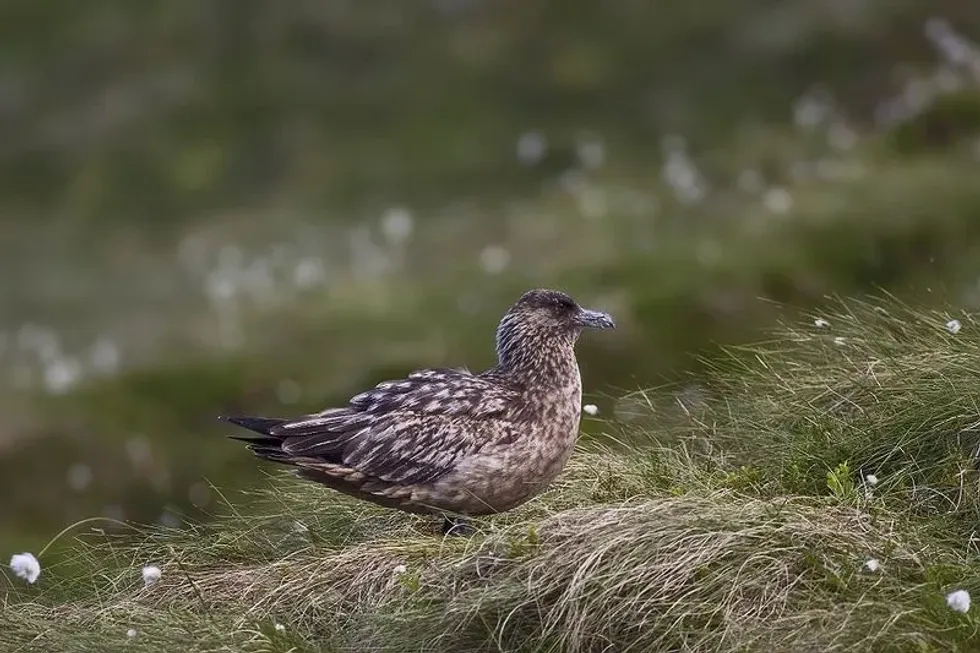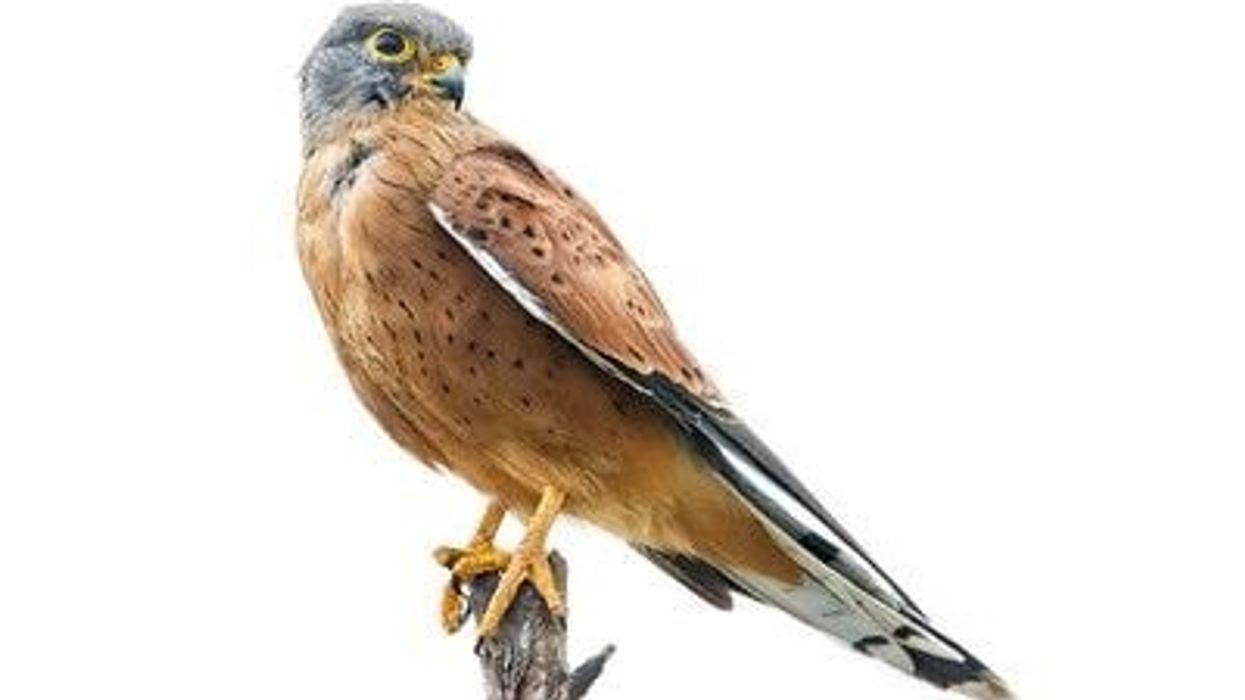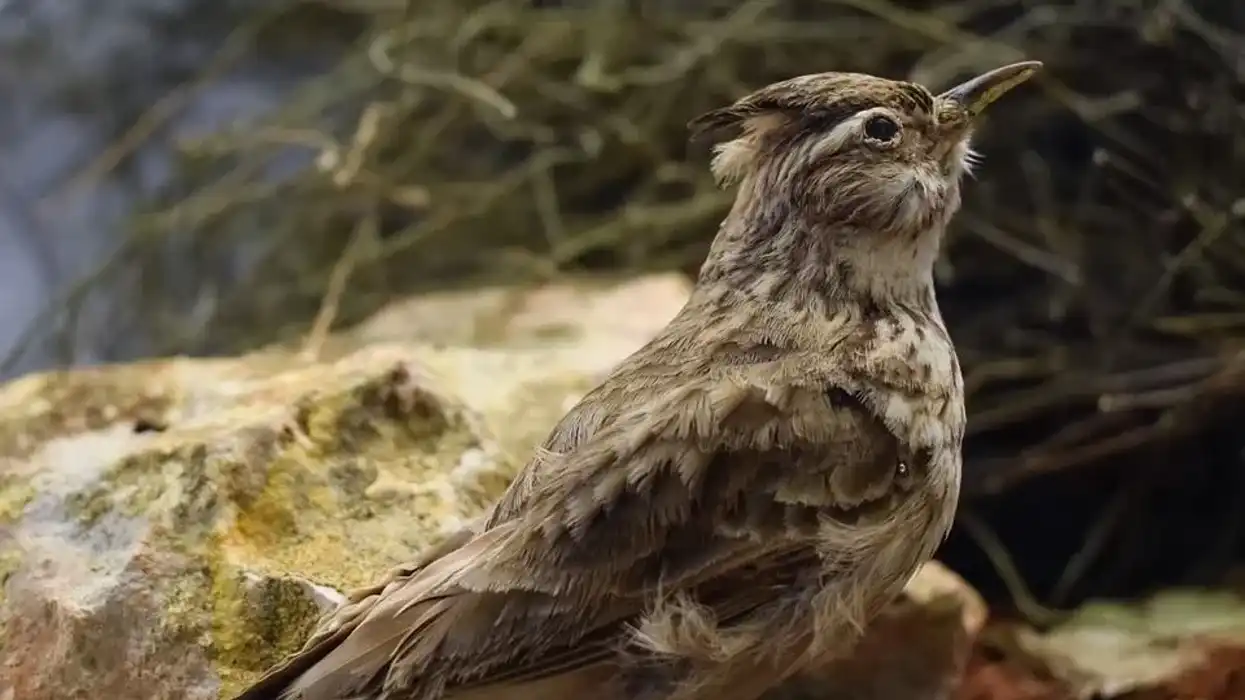The great skua is a seabird which is found along the northern coastlines of Europe. Its scientific name is Stercorarius skua and it belongs to the family of Thraupidae.
The English name for the bird skua is believed to come from the Faroese word 'skúvur' or 'skúgvu'. The Faroese people are an ethnic group found in north Germany. They have Gaelic as well as Norse origins.
These birds are known as the pirates of the sea as they create chaos on the sea. They chase and harass other seabirds and even steal fish from them.
Great skuas are found on rocky islands and the Scottish Iles but also undertake migration flights during the winter season. During their migration, they go to warmer coastlines in South and North America. This bird breeds during the summer. Conservation efforts are being undertaken to prevent population decline in some places near the Scottish Isles.
Keep reading for more amazing facts about the great skua! If you liked this article about the great skua, also check out our other articles with interesting facts about the laughing gull and sooty shearwater.
Great Skua Interesting Facts
What type of animal is a great skua?
The great skua (Stercorarius skua) is a type of seabird.
What class of animal does a great skua belong to?
The great skua belongs to the Aves class of the Animalia kingdom.
How many great skuas are there in the world?
The population of great skuas in the world is estimated to be around 30,000-34,999 mature individuals. Their population status is considered to be stable globally even though it is declining in some areas.
Where does a great skua live?
Great skuas are found in Europe but they are also seen in North and South America during winter. During the summer, which also coincides with their breeding season, these breeding birds are seen in northern Scotland and surrounding islands in the north. They can also be seen along the northern coastlines of the United Kingdom and Ireland.
During the winter, they undertake migration and visit warmer places along the southern parts of the Atlantic coastline in North America to South America.
What is a great skua's habitat?
Breeding great skuas prefer rocky islands in the north along the northern coast and moorlands. They are mostly found preying and hunting over the sea and ocean water. However, they also encroach upon the colonies of other seabirds.
Who do great skuas live with?
Not much is known about the social behavior of this bird species. However, female birds are seen to live with the young and take care of it while the male goes out to hunt for food and feed the offspring.
How long does a great skua live?
According to various studies, the average lifespan of a great skua is between 15-22 years.
How do they reproduce?
The great skua breeds in the northern islands, especially in the Scottish Isles. The great skua becomes sexually mature and breeds at the age of seven to eight years.
As a part of the breeding process, they build their nests in loose colonies. Their courtship ritual includes making a variety of harsh sounds along with an aggressive bodily display. The nests are built by both parents with grasses and leaves.
Female skuas lay two eggs and both the male and female incubate the eggs for around a month. Female skuas stay with the offspring and the male skuas bring back food. The nestlings start to fledge about 40-50 days after hatching and leave the nest sometime after that.
What is their conservation status?
The International Union for Conservation of Nature (IUCN) has listed the great skua under its Least Concern category in its IUCN Red List based on the stable population trend that the great skua bird has been exhibiting.
Great Skua Fun Facts
What do great skuas look like?
These short, heavy skuas have fat and hooked bills. The great skua is mostly grayish-brown to dark brown in color along with light brown marks all over the body. Their head is dark brown in color and their flight feathers are dark gray in color.
Both the sexes look alike and their legs are black in color. Their wings have a white patch that makes them look like a gull during flight. The juvenile birds are dark brown in color.
How cute are they?
The great skua is not a very cute bird. They are huge seabirds and expert predators. Their dull brown colored plumage is not very appealing either. However, it is exciting to see these birds in flight.
How do they communicate?
Skuas mainly communicate with each other through sound, especially during the breeding season. They make loud calls that resemble a 'gek-gek' sound or make mewing calls that resemble 'ji-ah, ji-ah'.
How big is a great skua?
The average length of a bird of this species falls within the range of 20-22 in (53–58 cm). The length of their wingspan falls under the range of 49-55 in (125-140 cm).
Another seabird, the northern gannet, is twice the size of great skuas as it is approximately 36.6-43.3 in (93-110 cm) in length.
How fast can a great skua fly?
Great skuas have been noted to fly at an intermediary speed of about 33.55 mph (54 kph).
How much does a great skua weigh?
The average weight of a bird of this species falls under the range of 2.6-4.1 lb (1.2-1.9 kg).
What are the male and female names of the species?
The males and females of this species do not have a separate, distinct name. They are simply referred to as a male great skua or a female great skua.
What would you call a baby great skua?
A baby great skua does not have a unique name. It is usually referred to as a chick or nestling, similar to other bird species.
What do they eat?
The diet of this species primarily consists of fish, carrion, insects, and smaller birds. Their diet also includes small mammals. When at sea, they prey on smaller birds or fish species like sand lance which can be found in large schools.
This bird species do not eat penguins but are seen to eat other seabirds like kittiwakes and puffins. Puffins are smaller auk birds of the genus Fratercula.
Are they dangerous?
This bird species is known for its vicious predatory tendencies. This bird is noted to attack and kill seabirds which are comparatively larger in size than the great skua.
They can also be quite dangerous to humans. If they notice any human coming near their nest, that human may face a fierce great skua attack.
Would they make a good pet?
The great skua species would not make a good pet. They prefer their wild marine habitat where they can hunt down their prey and eat it. They would not be very manageable as pets.
Did you know...
A group of great skua birds is referred to as a shishkab.
What other names does the great skua have?
The great skua has many names in the regional languages of the north European places it inhabits.
In Great Britain, this bird is also known as a Bonxie which presumably comes from the Old Norse word 'bunki' that means 'dumpy'. This name could be referring to the heavy build of the bird as well as its habit of swooping in and attacking anybody who approaches its nest.
In German, the bird is referred to as skua and 'Grand labbe' in French.
Do skuas have predators?
The great skua bird does not have many predators because of its large size and aggressive behavior. They are also very territorial and protect their nests.
However, young great skua birds are often preyed upon by the Arctic fox or cats. Adult birds can be preyed upon by bigger predator birds like the white-tailed eagle and the golden eagle. It may even fall prey to an orca sometimes.
Here at Kidadl, we have carefully created lots of interesting family-friendly animal facts for everyone to discover! Learn more about some other birds from our great auk facts and purple sandpiper facts pages.
You can even occupy yourself at home by coloring in one of our free printable great skua coloring pages.










